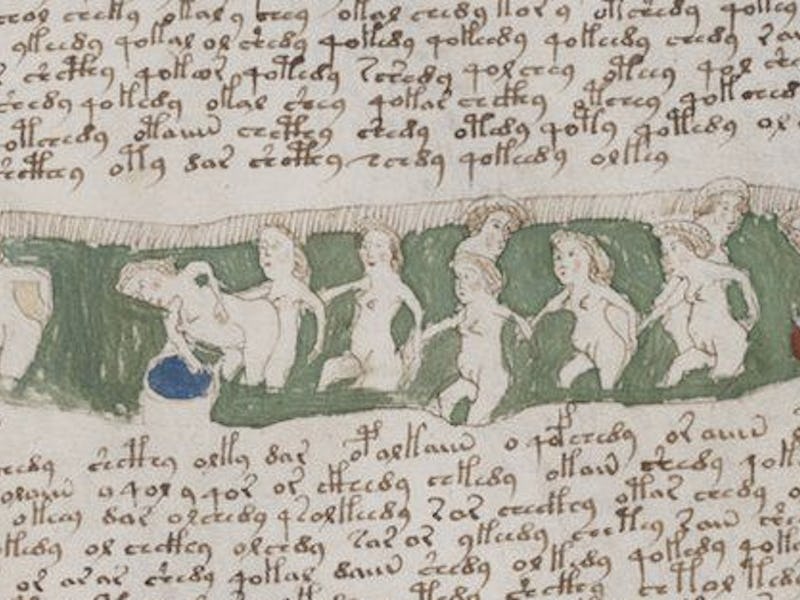Indecipherable Voynich Manuscript Finally Decoded After a Century
What's inside is still pretty mysterious, though.

In yet another example of women’s anatomy confounding men for decades, the Voynich manuscript, an infamous 15th-century text thought to have used an indecipherable code, has been revealed to actually be a guide to women’s health.
The medieval manuscript was previously thought to be written in an ancient code so unusual that even codebreakers from World War I and II couldn’t crack it. But a British expert on medieval texts says that after spending three years analyzing the manuscript — named for eccentric book dealer Michael Voynich, who bought it in 1912 — he discovered that it wasn’t code after all but a strange form of Latin shorthand.
“It was unknown writing, so they had it in their head that it was code,” Nicholas Gibbs said in an interview with The Times. “The problem was that none of the cryptographers were historians; none knew medieval manuscripts.”
What’s more, the manuscript’s illustrations of naked women, zodiac designs, and exotic plants that once fueled Voynich’s assertions that the text referred to black magic are actually instructional pictures for treating gynecological conditions.
Illustrations of women bathing in the Voynich manuscript.
On Tuesday, writing in The Times Literary Supplement, Gibbs revealed how he found a connection between the symbols used in the Voynich manuscript and similar symbols in other texts concerning medicine, including the Trotula, a group of 12th-century books devoted to women’s health. All the texts, he found, had identical depictions of the lodestone, a magnetic natural mineral, which was thought at the time to be a remedy for gynecological complaints. How it improved any woman’s health, however, remains a mystery.
Lodestones were once considered gynecological remedies.
Another clue within the Voynich manuscript was the repeated depiction of women bathing, known at the time as a popular strategy for improving health, Gibbs said. “Each Zodiac wheel in the Voynich manuscript is populated by depictions of naked female figures in the classical tradition of either bathing in hip baths or in physical exertions,” he wrote.
Plants depicted throughout the Voynich manuscript.
An additional hurdle to deciphering the manuscript was the organizational structure of the book itself. Gibbs discovered that the reason none of the plant names or titles of the maladies covered in the book were written on any of the pages is because they were written on the index, which is missing from the manuscript.
“For the sake of brevity, the name of both plant and malaise were superfluous in the text so long as they could be found in the indexes matched with a page number,” he said.
Health manuals from the time often included indexes: “employing a system of cross-reference for illnesses, complaints, names of plants and page numbers,” Gibbs wrote. If the Voynich manuscript hadn’t lost its index, the book would likely never have acquired the mystery-soaked celebrity it enjoyed over the past century.